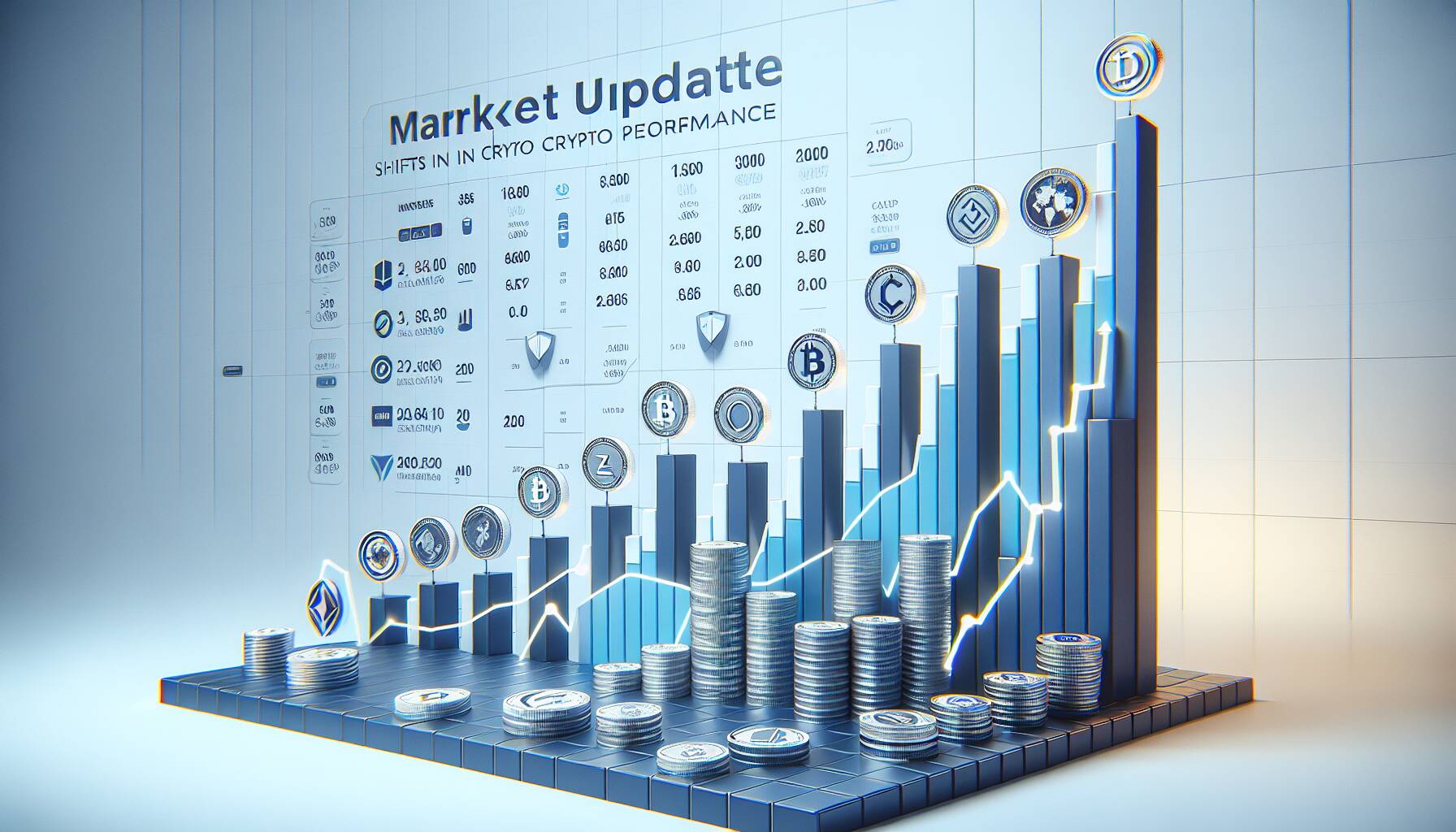In the dynamic world of cryptocurrency, the daily fluctuations in market performance can often tell a compelling story. CoinDesk Indices has recently shared its market update, shedding light on the current standings within the CoinDesk 20 Index. As of the latest data, the CoinDesk 20 Index is trading at 3366.83, reflecting a subtle decline of 0.8% or a decrease of 28.06 points since 4 p.m. ET on Monday.
Among the 20 cryptocurrencies included in this index, three notable assets have emerged as leaders in today’s market. Ethereum (ETH) has shown a positive performance with a rise of 3.5%, showcasing its resilience and continued relevance in the ever-evolving crypto landscape. Another noteworthy mention is SUI, which has gained 0.9%, adding to its growing acclaim in the industry.
However, not all assets have fared as well in this trading session. Both Uniswap (UNI) and Polkadot (DOT) have faced significant downward pressure, with declines of 4.2% and 4.1%, respectively. Their performance highlights the volatility that is often seen in cryptocurrency markets, where shifts can happen rapidly.
With the CoinDesk 20 Index being a broad-based measure traded across multiple platforms globally, it remains a key barometer for gauging the pulse of the cryptocurrency market.

CoinDesk 20 Daily Market Update
The CoinDesk Indices present vital insights from the daily market update of the CoinDesk 20 Index that can impact investors and enthusiasts in the cryptocurrency space. Here are the key points:
- Current Trading Value:
- The CoinDesk 20 Index is trading at 3366.83.
- This reflects a decrease of 0.8% (-28.06) since the previous trading session.
- Leaders in Performance:
- ETH (Ethereum) increased by 3.5%.
- SUI saw an uptick of 0.9%.
- Laggards in Performance:
- UNI (Uniswap) dropped by 4.2%.
- DOT (Polkadot) fell by 4.1%.
- Index Diversity:
- The CoinDesk 20 includes 20 assets, providing a broad perspective on the market.
- This index is traded on multiple platforms across different regions globally.
Understanding the shifts in the CoinDesk 20 Index can help investors make informed decisions about their cryptocurrency investments. Performance leaders like ETH may present opportunities for growth, while laggards like UNI and DOT might require cautious evaluation.
CoinDesk Indices Daily Market Update: A Comparative Look
The latest update from CoinDesk Indices sheds light on the dynamic movements within the CoinDesk 20 Index, a barometer of the cryptocurrency market’s pulse. Currently sitting at 3366.83, this indicator reflects how quickly the landscape shifts, with a slight dip of 0.8%. In today’s report, we see standout contributions from Ethereum (ETH) and SUI, demonstrating their resilience amid a largely fluctuating market, while others like Uniswap (UNI) and Polkadot (DOT) lag behind significantly.
When comparing this news update to other indices such as the Bloomberg Galaxy Crypto Index (BGCI) or the CoinMarketCap indices, the CoinDesk 20 distinguishes itself through its diverse asset selection and global trading presence. One of the competitive advantages of the CoinDesk 20 is its carefully curated list of assets, which lends it credibility and reliability among investors seeking comprehensive market insights. Additionally, with coins like ETH showing positive momentum, it suggests a potential for growth within niche segments of the index, likely attracting attention from long-term investors and traders pursuing the highest returns.
However, the drop in performance for key assets like UNI and DOT could create problems for traders heavily invested in these lagging coins. Investors tend to flock toward indices with more stable historical performance, and such volatility may deter those who prefer a more stable investment approach. Furthermore, with the crypto market still facing regulatory challenges, these fluctuations could unsettle novice traders, perhaps pushing them towards more conservative, traditional assets.
This up-to-the-minute market update could benefit institutional investors and highly skilled traders who thrive on understanding market movements and rebalancing portfolios to maximize gains. Conversely, it may pose challenges for retail investors who are still acclimatizing to these rapid changes, as they may lack the experience to navigate the complexities of adaptive trading strategies in a volatile environment.
















